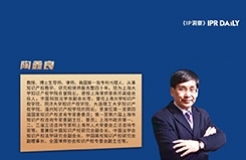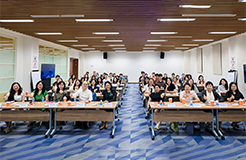我们已发送验证链接到您的邮箱,请查收并验证
没收到验证邮件?请确认邮箱是否正确或 重新发送邮件
没收到验证邮件?请确认邮箱是否正确或 重新发送邮件
确定
-
Bird & Bird’s history stretches back to the 1830s and the firm was formally established in 1846. Even back then, the firm’s excellence in client service and passion for key industries attracted leading innovators.
As technology allowed innovations and ideas to travel more quickly, the need to protect the ideas and innovations of its clients encouraged the firm to expand its international capabilities. Now, almost 180 years later, Bird & Bird has 26 offices across Europe, the Middle East and Asia and clients based in 118 countries worldwide.
The origins of the firm - 1830s to 1900
Supporting innovation at the heart of the legal world
Bird & Bird can trace its origins back to the 1830's when William Frederick Wratislaw Bird came down to London from the English West Midlands to qualify as a solicitor. After a brief partnership with William Fisher and another with James Moore, the young William Bird found himself heading up the growing Bird & Moore in the growing legal complex of Gray’s Inn, the heart of the English legal world at a time when the English legal system was beginning to undergo major reform. William clearly thrived on the challenges of this fast paced environment as the firm focused on helping those taking advantage of Britain’s industrial expansion. It grew quickly and, in 1875, his son William Barrott Montford Bird joined the firm. For the next nine years, father and son worked together until, in 1884, the elder William retired, leaving his son in charge. The younger William Bird was a formidable figure who built a strong clientele in two of the most important technologies of the age - coal mining and iron making – and Edmund Strode joined from 1891. Reflecting the firm’s focus on innovative industries, in 1898 it took on its first trade mark case on behalf of The Eastman Photographic Materials Company, protecting Silo photographic paper, a move that was an early sign of the firm’s focus on protecting its clients’ intellectual property and ideas. The passion for protecting clients’ interests helped build the reputation of the firm and William Bird became one of the leading solicitors on the London business scene, valued for his commercial acumen as well as his sharp legal skill. He was appointed to the boards of Williams Deacons Bank, now part of The Royal Bank of Scotland, and numerous iron and steel making companies that came to embody the glitteringly successful golden era of the late Victoria age. He became High Sheriff of Sussex, a member of Parliament for Chichester and, in an indication of his commitment to technology, as well as establishing one of the first electric light bulb companies – a company that is now a household name and still a client of the firm – he was awarded a knighthood for providing scholarships to enable science graduates to continue their research.The creation of Bird & Bird - 1900 to 1950
Straightforward City lawyers for leading innovations
By the turn of the new century Bird, Moore and Strode was firmly established as one of the leading London law firms and in 1901 William’s second cousin, Ernest Edward Bird, joined the firm as a partner. Like William before him, Ernest was set to become one of London’s most highly regarded solicitors and, just four years after Ernest became a partner, Edmund Strode left the partnership. The firm was renamed Bird & Bird in the same year. The focus on protecting the inventors of new technologies continued and in 1909 the firm conducted its first patent case on behalf of ‘Z’ Electric Manufacturing Co Ltd against Marples, Leach & Co Ltd, in a matter concerning filaments for incandescent electric bulbs. It was the same year that John Venning, who was to go on to establish one of London’s most significant patent practices, became a partner. Foremost amongst Venning’s clients was the Dutch electrical products company Philips and, by 1930 he had become so important to the company that he was appointed one of the three managing trustees of Philips’ English Trust, helping protect its interests during the war years. Assisting Venning was Arthur Hodges, one of London’s most talented solicitor’s clerks. Hodges, an unqualified but extremely gifted assistant, had a natural aptitude for science, technology and languages that gave him a unique insight into the challenges his clients faced. He also helped to establish Bird & Bird’s early reputation for clarity. As he said: “I used to write graphically in plain English using short words and sentences that drove the point home. [It was once remarked that it was possible to] recognise my work as it was written not in prolix incomprehensible legalese but in concise Hodgese.” Despite the fact that in 1941 severe bombing forced the firm to move from Grays Inn, the war years did not interrupt the growing reputation of the firm and, in 1943 Ernest Bird became president of the Law Society. A year later, like William before him, Ernest was knighted but, as the war came to end, he died and six years later William also passed away, leaving the firm ‘Birdless’ for the first time in its 120 year history.Building on the legacy - 1950 to 1990
Lawyers for the dawn of the computer age
With no children or heirs to pass on his considerable wealth to, Sir William left all his capital and goodwill in the firm to the remaining partners. However, it was the merger with Richard Furber & Son Windsor & Brown in 1954 that brought Alan Woods, the next significant player in the firm’s rich history, into the firm as a partner. Woods was to become senior partner and his focus on the newly emerging computer industry helped put the firm at the forefront of a revolution that was to shape numerous sectors. In 1973 he co-founded the Society for Computers and Law, becoming its first paying member. As well as becoming the leading firm for the growing computer sector, the focus on new technology enabled Bird & Bird to gain its first telecoms client in 1984, placing it at the forefront of legal developments in an industry that was being rapidly liberalised. Five years later, in 1989, Bird & Bird conducted the first Judicial Review of OFTEL, the UK telecoms regulator, helping to cement its reputation for navigating the leading edge of regulatory frameworks. It was this reputation, along with the depth of its understanding of key industry sectors, that provided the foundation for the next stage in the firm's development.Focusing on clients – 1990 to 2000
Establishing a sector based approach
By 1990 every Bird & Bird lawyer had a PC on their desk, making it one of the first firms to embrace the growing use of new technology in business. Three years after this, in 1993, David Kerr, who had helped establish the firm’s strong relationship with BT and was one of the most experienced communications lawyers in the UK, was appointed CEO and began to develop a new strategic vision. David continued to drive the firm’s focus on innovation. In 1995, Bird & Bird become one of the first UK law firms to establish its own website – www.twobirds.com. It also began to increasingly work internationally and opened offices in both Brussels and Hong Kong. While overseeing these innovations and the international expansion, David and the management team were shaping the firm to support its major clients with high value intangible assets to protect, as well as those facing complex regulatory challenges. In 1998, this approach was formalised when Bird & Bird become one of the first law firms to organise itself around key sectors, enabling it to more effectively share its understanding of the commercial challenges its clients faced. This sector focus helped attract more of the world's most innovative and technologically advanced companies, each of which depend on cutting-edge legal advice to meet their business objectives, and the firm’s rapid growth continued.International growth – 2000 to present
Rapid expansion around the world
As the new millennium dawned, the blue-chip client base and the global increase in cross-border trade meant clients looked to Bird & Bird to support their international expansion. The challenge for David and his team was to build the firm’s global capabilities in a way that built on its rich history and did not undermine the strengths that made it different from other law firms. The approach they adopted relied on recruiting leading individuals and small teams, rather than by merging with other law firms or establishing offices with English lawyers. The firm retained a structure – through a single profit pool – that meant that all partners shared a stake in the overall success, ensuring they were able to work effectively across borders for the benefit of clients. This proved extremely successful. In 2000 the firm opened in France and Sweden. One year later it opened in The Netherlands and year after that it opened its first office in Germany. In 2003, the expansion continued, with a new office in Italy and a second office in Germany. The rapid growth meant that in 2004 the number of partners at the firm reached 100 for the first time, and the expansion continued unabated with a new office in Beijing. The following year saw new offices in Madrid, Rome and Frankfurt, while 2006 saw a further opening in Lyon in France. 2008 saw the firm open a Finnish office in Helsinki through a merger with a leading Finnish firm Fennica, as well as four other offices in the Czech Republic, Hungary, Poland and Slovakia and a third office in China with the opening of an office in Shanghai. On top of this, expansion in London continued through a merger with Lane & Partners. In 2008, the success of the strategy was recognised by The Lawyer, which named Bird & Bird its International Law Firm of the Year, and in 2009 the firm entered into a Global association with one of Singapore's leading law firms, which is now known as ATMD Bird & Bird. Two years later, a fourth German office was opened in Hamburg and another opened in Abu Dhabi. Bird & Bird continued to expand its international reach and in May 2013, merged with Danish outfit BvHD, completing its coverage of the Nordic region – a unique offering among international firms. The same year, the firm signed international cooperation agreements with Truman Hoyle and BCCC Avocats, located in important knowledge economies Australia and Switzerland respectively. These relationships reflect Bird & Bird's on-going commitment to serving clients in its specialist sectors around the world. Bird & Bird has also continued to be honoured by awards, garnering recognition from the British Legal Awards, The Lawyer Awards, Legal Business Awards, Managing Partners' Forum Awards, Europe Women in Business Law Awards, ILO Client Choice Awards and others.The firm today
A successful international law firm with a rich history
There have been many changes for Bird & Bird over its 160-year history, but one thing remains; the culture and identity of Bird & Bird. We are proud to be a firm that produces high-quality, free-thinking, innovative advice and ideas, with lawyers who don't sit on the fence and aren't afraid to speak their minds. We now practice 18 areas of law in more than 16 industries, in 17 countries, and our collaborative international network means our clients know they'll receive the best advice, wherever it is needed. Our clients are based across 118 countries worldwide and 75% of our major clients work with more than one of our offices, demonstrating our ability to work seamlessly across jurisdictions. Our support for the individual means our people enjoy long careers with us, passing down our deep legal knowledge, international reach and excellence in client service from one generation to the next to ensure that the Bird & Bird story continues.
Office contact details
Click here to view contact details for each of our offices >Media contacts
International queries: Emilia Szok, international PR Manager - emilia.szok@twobirds.com. UK queries: Lizzie Hannaway, PR Executive - elizabeth.hannaway@twobirds.com. You can also call us at +44 (0)20 7415 6000.Regulatory/Risk & Compliance queries
Please email us at compliance@twobirds.com or call us at +44 (0)20 7415 6000.Feedback on our website
Broken links? Couldn't find what you were looking for? Email us at websiteteam@twobirds.com
焦点追踪
关键词
首席知识产权官
世界知识产权日
美國專利訴訟管理策略
大数据
软件著作权登记
专利商标
商标注册人
人工智能
版权登记代理
如何快速获得美国专利授权?
材料科学
申请注册商标
软件著作权
虚拟现实与增强现实
专利侵权纠纷行政处理
专利预警
知识产权
全球视野
中国商标
版权保护中心
智能硬件
新材料
新一代信息技术产业
躲过商标转让的陷阱
航空航天装备
乐天
产业
海洋工程装备及高技术船舶
著作权
电子版权
医药及高性能医疗器械
中国专利年报
游戏动漫
条例
国际专利
商标
实用新型专利
专利费用
专利管理
出版管理条例
版权商标
知识产权侵权
商标审查协作中心
法律和政策
企业商标布局
新商标审查「不规范汉字」审理标准
专利机构排名
商标分类
专利检索
申请商标注册
法规
行业
法律常识
设计专利
2016知识产权行业分析
发明专利申请
国家商标总局
电影版权
专利申请
香港知识产权
国防知识产权
国际版权交易
十件
版权
顾问
版权登记
发明专利
亚洲知识产权
版权归属
商标办理
商标申请
美国专利局
ip
共享单车
一带一路商标
融资
驰名商标保护
知识产权工程师
授权
音乐的版权
专利
商标数据
知识产权局
知识产权法
专利小白
商标是什么
商标注册
知识产权网
中超
商标审查
维权
律所
专利代理人
知识产权案例
专利运营
现代产业
文章不错,犒劳下辛苦的作者吧
- 我也说两句
- 还可以输入140个字
回复
还可以输入 70 个字


 共发表文章
共发表文章










